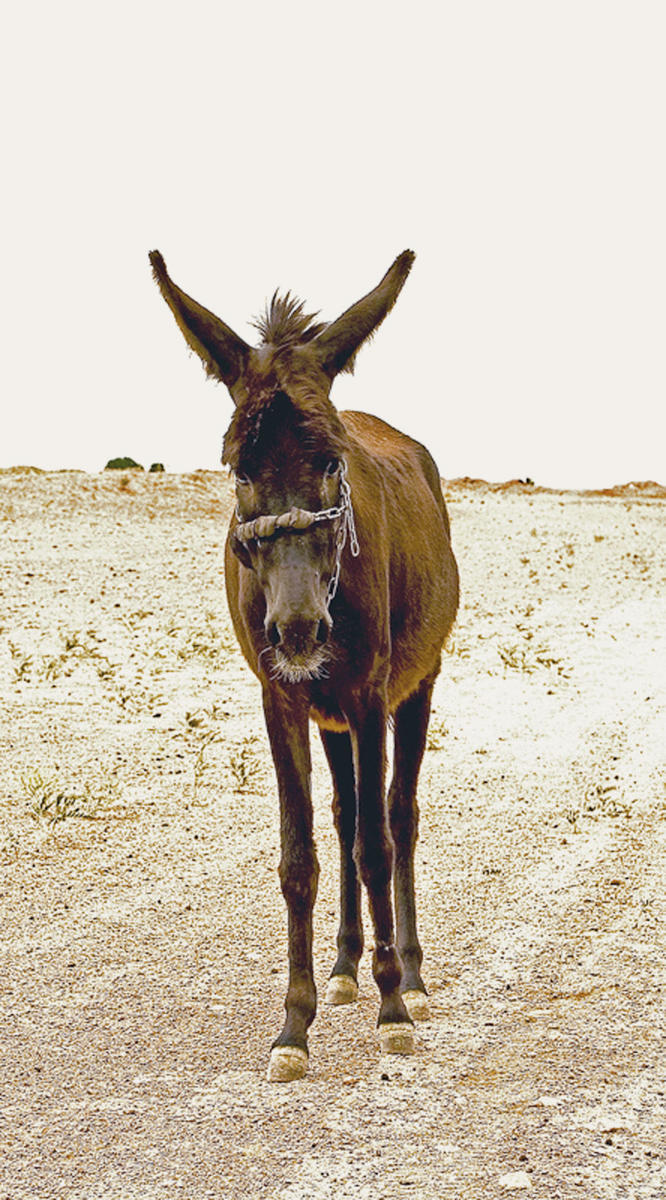
Tehran
Homayoun Sirizi
Ave Gallery
July 8-21, 2007
Vol I: Buridan’s Society, July 8-14
Vol II: U-Turn, July 15-21
The only maxim of contemporary art is not to be imperial, says Alain Badiou. “Empire no longer censures anything,” he writes in his fourteenth of Fifteen Theses on Contemporary Art, and we should simply overcome “the pitiless censors of ourselves.” This is a nice idea in principle, but a New Yorker rushing to his office on Wall Street clutching his coffee in hand may have a vastly different perception of the Empire than a Tehrani strolling to work. These days, the latter may be worried about getting caught by the morals police in downtown’s Vanak Square for wearing a short-sleeve shirt, or simply having slightly too much gel in his hair.
In this picture, Tehran-based artist Homayoun Askari Sirizi is not holding the scissors by any means. In his recent two leg [volume] “Ain’t we having fun here” Volume I, the artist takes on the iconic paradox of ‘Buridan’s Ass,’ (named after the 14th-century philosopher) in which a donkey, equally thirsty as hungry, dies because he cannot choose between two equidistant and equally tempting means of satiating himself: a pile of hay and a bucket of water.

Entitled “Buridian Society,” the installation’s centerpiece is a 2*1 photograph of a donkey. Along the donkey’s left side lie 20 buckets of hay and on the right is 20 buckets of water. On the left wall hangs a picture of traditional Iranian bread and on the opposite wall a picture of a bookshelf within a bookstore. Stepping into the gallery space, the chic Tehrani art-goer finds himself in the place of the donkey, or the ass, as it were. In a second part of the exhibition, entitled U-Turn, a luminescent donkey-shoe is encircled by seven traffic signs taken from various Tehran U-turn sites. The signs were placed into blue barrels, a new urban icon that had been introduced to the city back when the current president was still the mayor of Tehran. On the signs, the original format and text is kept intact, but the translations are slightly modified; Nobonyad Square, for example, becomes Neo-Fundamentalism Square.
In the end, Sirizi didn’t create a byzantine maze of meaning here. He employed simple semiotics and pared-down logic, and he avoided wrapping his ideas in exotica or belaboring it with traditional metaphor. It was a refreshingly simple exhibition and a refreshingly simple idea. After all, it is a U-turn from Happiness Street to Islamic Revolution Square, from Badiou to Buridan, from the twenty-first century to the fourteenth.